What is Gesso?
Have you seen this product in Art Supply stores and wondered … “What is Gesso and How do I use it?” As an artist/educator, I especially enjoy learning and teaching others about the benefits of ‘tools of the trade.’ Today I am writing about this simple, but oh so versatile, product that I have used for many years, which has been invaluable to me with each new painting endeavor. It certainly has helped make painting easier and more enjoyable. I hope you will find this post to be fun and informative.
I think once you try this medium you will wonder how you ever got along with out it. This is a comprehensive guide that is all about Gesso!
A Quick History of Gesso
Although the exact origins are unknown, what is certain is that Gesso has been used by artists and craftsmen for centuries to prepare panels, canvas, or other surfaces for painting or gilding. It is believed to have first been developed in Italy because the word Gesso is an Italian word that means ‘chalk’, plus the fact that art has always been such an integral part of Italian culture. And if you are wondering how it’s pronounced it sounds like Jesso.
Gesso was originally made using chalk dust and a powdered white pigment mixed with animal-skin glue (often called size in recipes). Other options were zinc mixed with the dust and glue or a compound of plaster of Paris or whiting and glue. The paramount benefit was, and still is, the use of Gesso as a primer to allow paint to adhere permanently to the surface of the painting. In the early days of its use, the surface (or substrate) for Gothic and Renaissance art was wood panels. Before the use of Gesso, paint would tend to slide off of the wood. In modern times, it has been beneficial in the prevention of paint soaking into the weave of the canvas. I feel it noteworthy to mention that Gesso has also been used for generations in sculpting; it can be cast into a mold and/or used to actually make the mold and gilding: it preps surfaces like molding for gold leafing.
Modern Gesso
In 1955, an acrylic paint company called Liquitex developed the first water-based Acrylic Gesso, using a mixture of calcium carbonate, pigment, and an acrylic polymer medium. The pigment was (and still most commonly is) titanium white or titanium dioxide.
Modern Gesso is primarily used on canvas and comes in a variety of colors other than white, including black and clear. Artists today often create their own colored versions of the medium to quickly deepen the hue, (watercolors for example). It is available in squeeze bottles or sprays as a ‘liquid’ form or in jars and tubs as a standard medium that a paintbrush is dipped into.
What is Gesso?
People often refer to it as Gesso paint. But actually it is a thin, white paint mixture consisting of a binder mixed with chalk, gypsum, pigment, or a combination of these substances. It can be described in as a protective prep coating or ground, which provides a smooth, slightly textured surface, making it ready to add acrylic paint, ink, watercolor, etc. It also provides some ‘tooth’ that allows the paint to stick to the surface similar to primer that is used before painting walls and furniture.
There are two different grades of Gesso that are available. The two different types of Gesso are student grade and artist grade. The difference between these two is based on the ratio of filler to pigment. Student grade uses more filler than pigment and is less expensive, while artist grade uses a larger amount of pigment than filler. The artist grade is thicker and more opaque (less see through).
For the record, the top five sellers of these Gesso on Amazon.com are:
- Art Basics Clear
- Dina Wakley Media Gesso
- Golden Acrylic Gesso
- Liquitex (the original) Professional White Gesso
- Handy Art Student Acrylic Gesso
My personal favorite is the Golden brand, which I have used with great results (along with their acrylic paints) for many years. On that note, I will quote Golden on their synopsis of the uses and benefits of Gesso products. “Golden Gesso offers artists a variety of ways to prepare substrates for acrylic paintings or other art media such as oil, charcoal, alkyds, pastels, and watercolor. It is water-based, permanent, flexible, and can be easily sanded if necessary.” Golden also notes that for oil paintings it is recommended that a minimum of three layers of Gesso be used for sufficient opaque quality and substrate protection.
The newest form of Gesso is actually made with recycled soy products. This was developed in the year 2008, and it is becoming more popular as an alternative source. It is the first ‘bio’ or ‘environmentally safe ‘ (from living or prior-living organisms) developed Gesso, which is very easy to use and is completely free of toxins and petroleum. Which personally is a huge plus for me and something that I look for when purchasing craft supplies.
I should point out that Gesso pre-primed canvases are now widely available for purchase commercially from brick and mortar and online art supply stores and providers. It saves a lot of time.
What is Gesso used for
As collage, Altered Art, Mixed Media, Journaling, etc. became more popular Gesso moved beyond just a ground or primer coating. It is a staple in most arts and crafts studios today. TIP: I always clean off my Gesso brush and palette knife in a journal to get the last bit of goodness.
I love working on ‘gessoed’ surfaces for my mixed media, books, fine and altered art. It makes the work easier and the paints, pencils, and inks love it. Gesso adds strength to paper and journal pages and keeps the paints and potions from soaking through. It also allows me to cover an Oops or change my creative mind as a piece evolves. Black Gesso can be used to unify a work before adding color. Gesso can also add texture to the surface that shows through if you don’t sand it. Clear Gesso preserves a previous layer.
Experiment and play with gesso. Try using a dry brush to apply it and then try using a wet brush as well. Try different brands out … because some are more smooth, some are more gritty, and some have a dry feeling like plastic. You will find what works best for your art and your particular project.
Here are some tips for use:
- Stir or shake Gesso before use to make sure all of the ingredients are properly mixed.
- Have a dedicated Gesso brush or roller. This medium can be pretty hard on your brushes. I use an inexpensive, natural hair chip brush to apply it. If you use one of your good artist brushes, I recommend putting a bit of brush conditioner on your brush after cleaning.
- Krylon Gesso Spray is a quick way to prepare a smooth, hard, ready-to-paint surface. It dries bright white. Apply in thin coats, 30 seconds apart.
- Apply at least thin two coats of Gesso. I apply one horizontally and one vertically waiting about an hour between coats.
- Allow Gesso to cure naturally. I usually coat several surfaces at once and allow them to dry overnight. A heat gun can be used if you must, but it can ‘cook’ gesso and become a messy nightmare.
- Sand Gesso with fine sandpaper for a smooth, matte surface like eggshells.
- Gesso can be tinted to any color with acrylics.
How to Apply it to a Surface
Gesso priming takes a little time and patience. If done well, it gives you a lovely surface for your artwork. Here is how to apply it to canvas, wood, paper, board, etc.:
Step 1: Protect your tabletop or easel as it does not come off easily. Ensure your surface is clean and free from dirt or oils. A quick wipe with a dry brush or a little rubbing alcohol is good.
Step 2: Dip brush into the gesso. Most products are ready to use straight from the container after shaking or stirring.
Step 3: Apply the gesso in a thin, even coat to the surface, working all in one direction (horizontal or vertical).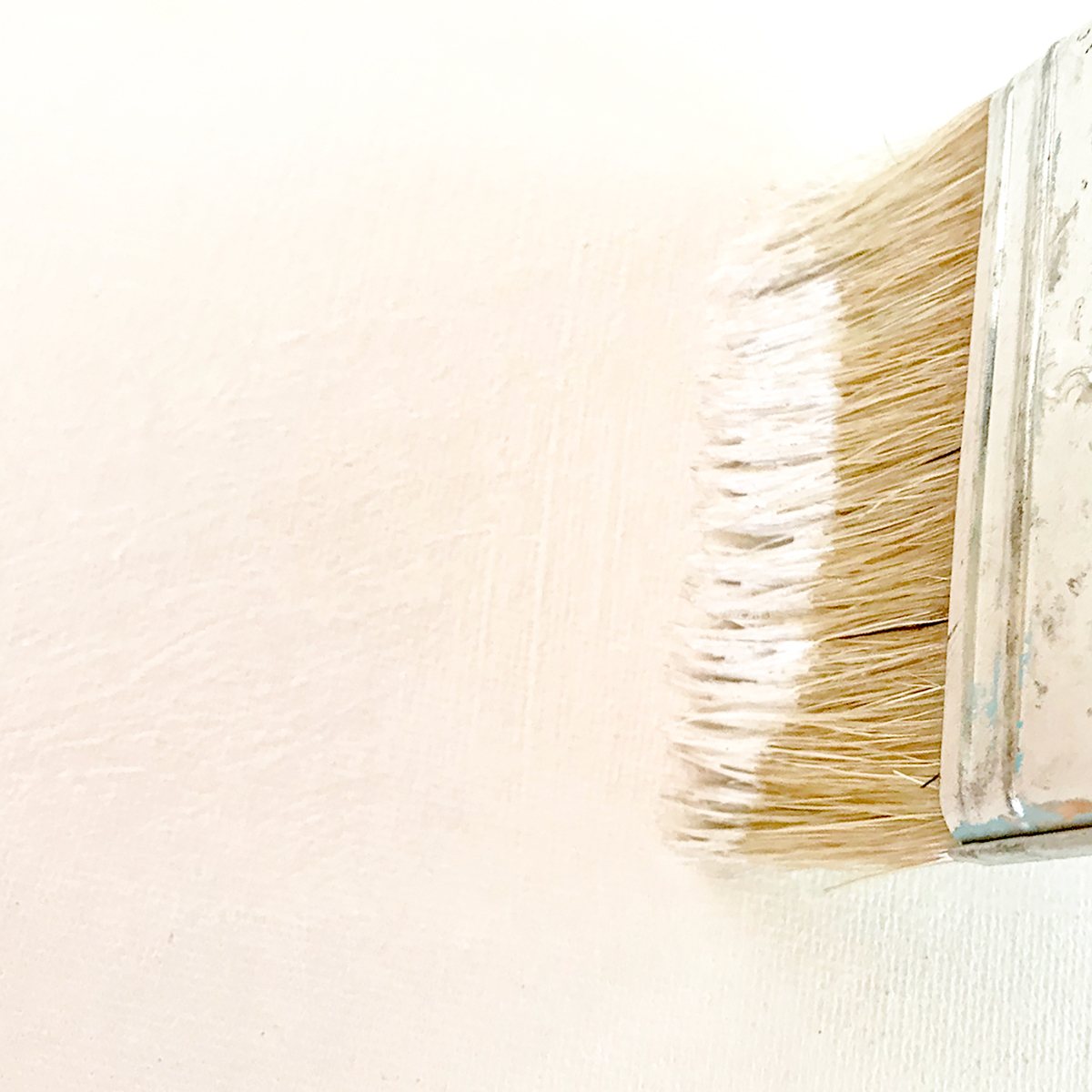
Step 4: Allow the first coat to dry 1 hour. (Be patient.)
Step 5: Lightly sand the dried gesso with fine sandpaper. This smooths any brush ridges and allows for a slight tooth for good adhesion of paints. If you lie the ridges, leave them.
Step 6: Apply a second layer of gesso, working the brush in the opposite direction from the first layer (horizontal or vertical).
Step 7: Allow to dry again, sand, and repeat steps 3 through 5 as many times as you like!
You can see the texture from a chip brush application to a journal page below. To sand or not to sand?
I hope that you have enjoyed learning all about Gesso as much as I have! I encourage you to go for it when playing with gesso…the possibilities are truly endless. Let me know if you find a new way to use Gesso please!!
Painted Journal Video:
You might enjoy watching this painted journal video by Jane Chipp, using Gesso and Paint.
If you liked this post you may also like our Comprehensive Guide to Gel Medium HERE.
I also teach Crafting tutorials over on The Graphics Fairy Premium Membership site. You can find even more of my art, DIYs, and whimsical shenanigans on Cre8tiva.
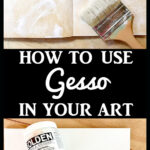
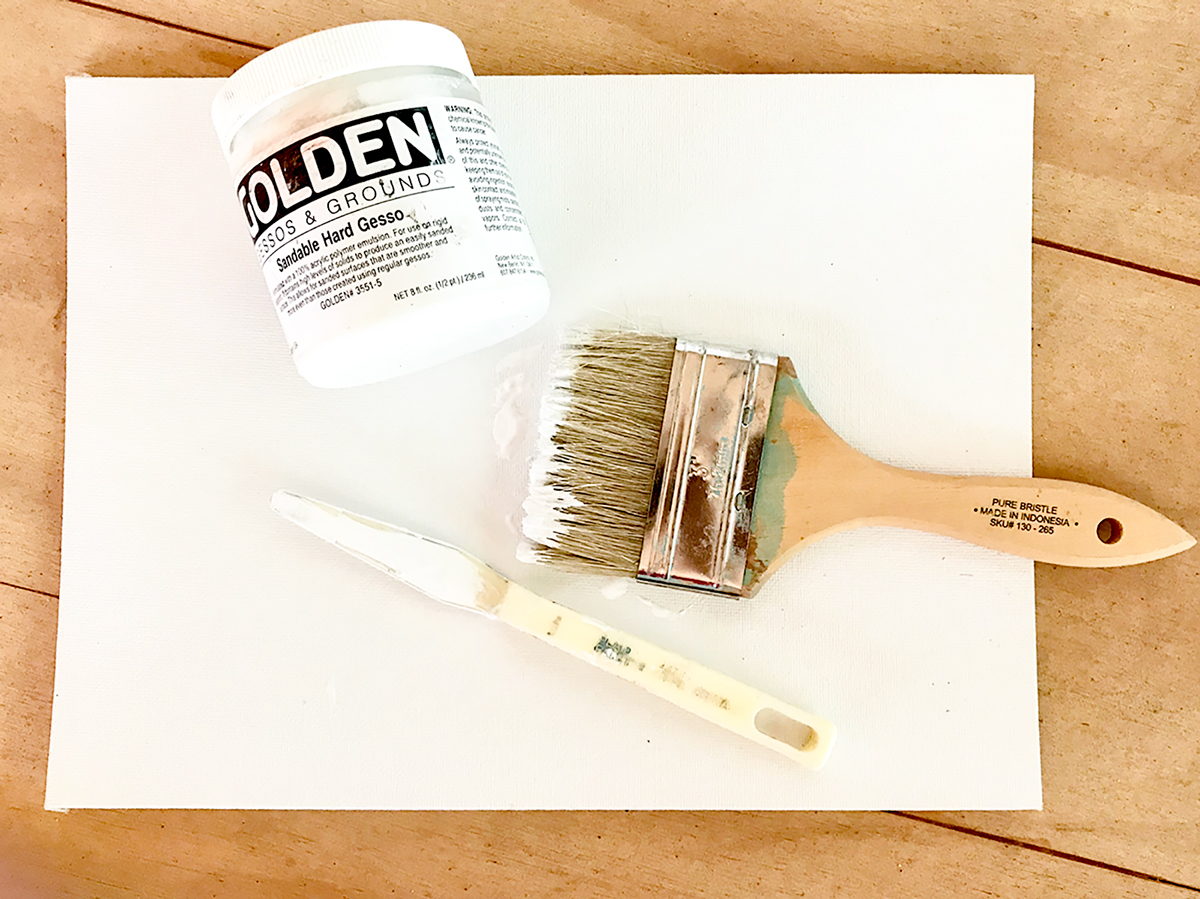
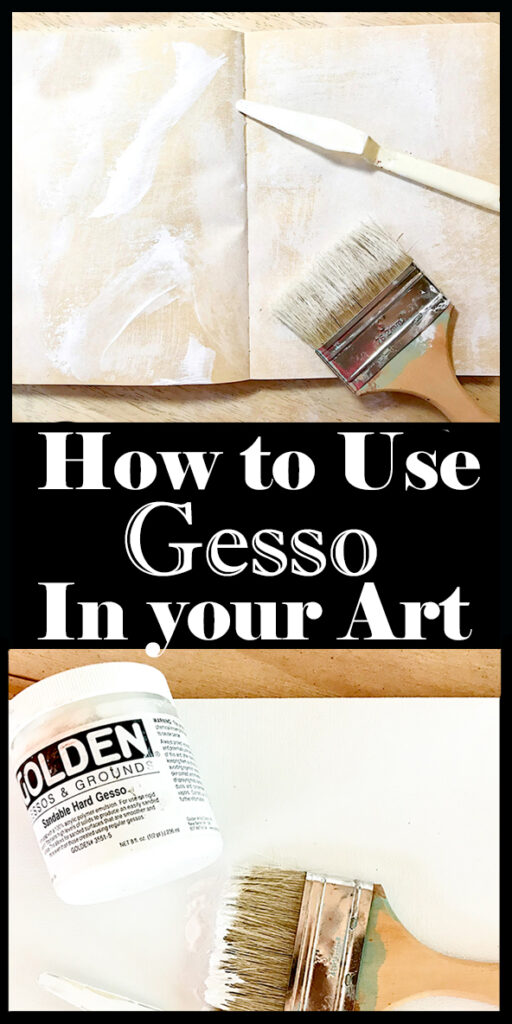
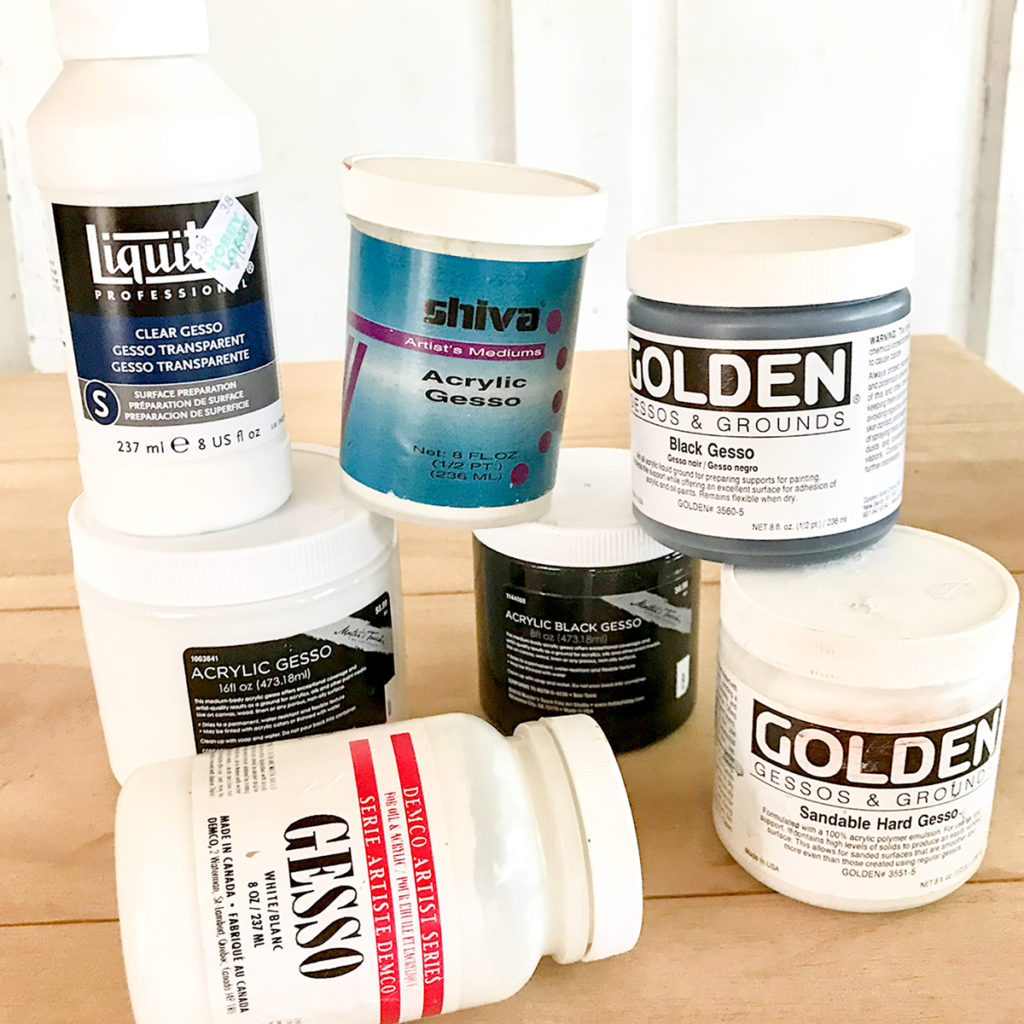
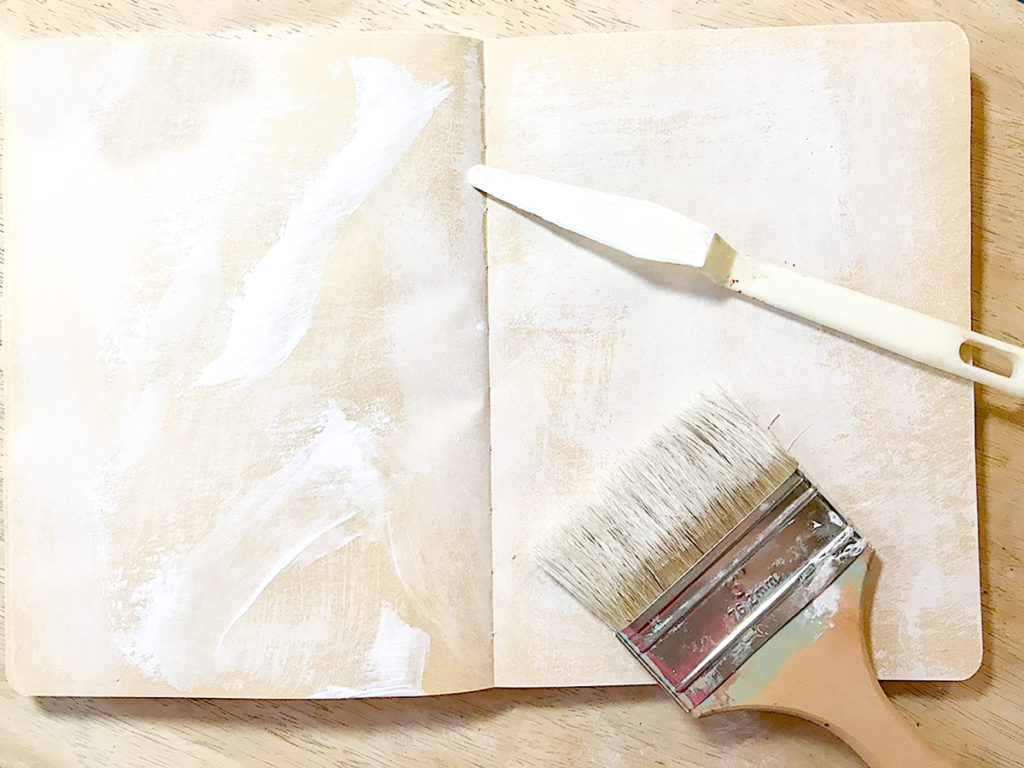
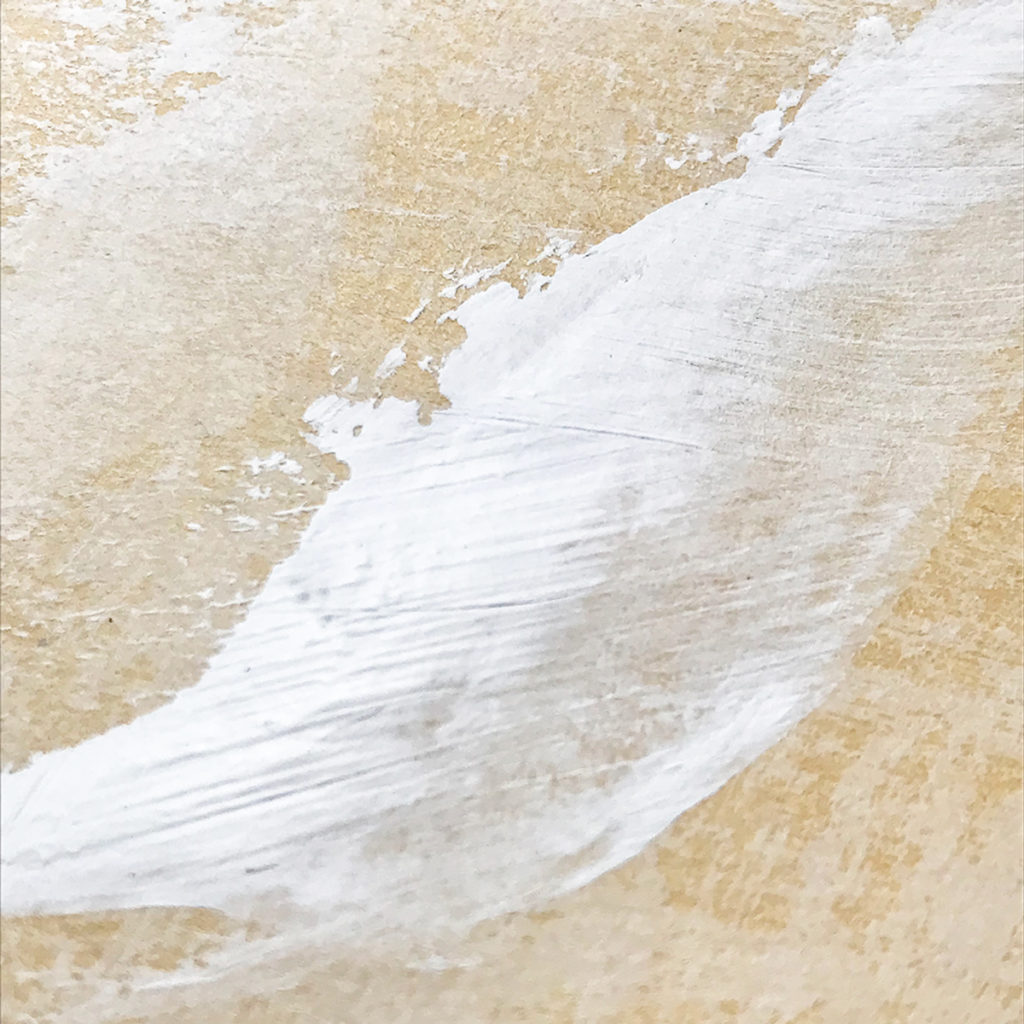
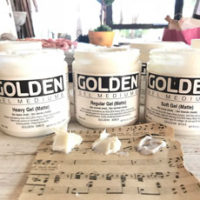

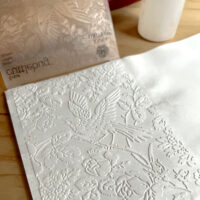




Olivia Peth says
Great post, thank you for sharing. I am working on some burlap tote bags and am curious whether or not a heat press can be used once Gesso is dry. I’d like to layer heat transfer material on top of the Gesso, with the Gesso acting as a binding agent as well as a solution to cover my first attempts with acrylic and HTV. You mentioned that a heat gun produces a big mess when used to dry Gesso…any idea if a 300F heat press can be used once the Gesso is dry? Thank you in advance!
Rebecca E. Parsons says
Hi Olivia. That is a great question. I am checking with Gesso makers for help with this. I will be back with info soon. Rebecca
Rebecca E. Parsons says
Olivia: I received and answer from Cricut. “We’ve used Cricut EasyPress successfully on the Titanium acrylic gesso primed canvases that you can buy from craft stores.” Hope you can find Titanium acrylic gesso to practice with. I would test this on a small piece before going to the tote bags. Best of luck!!
Catherine says
I painr straw hats with Acrylics and qith time paint starts to come off..would Gesso help paint to stay ocer the hat? I heard the straw hat is oily so paint does not stay. What do you think?
graphicsfairy says
Hi Catherine, I am not sure as I have never tried it. I guess it might be worth a try 🙂
Gillie Runge says
I heard about Gesso and curious to know about it. I love to color, watercolor, markers and pencils. Do I need to use Gesso before coloring? I use colored pencils papers, Strathmore, Fabriano, Bristol Smooth, X-press copic paper. Do I need Gesso for these? Thanks
Scotti says
Has been very helpful, thank you????
graphicsfairy says
My pleasure Scotti 🙂
April Weisler says
Hi, can you tint White gesso with an acrylic color to layout a colored background. A slight tint, instead of white?
graphicsfairy says
I’m sure you can April, please let us know how it worked out for you if you give it a try 🙂
Pradeep says
Thank you for an excellent and informative article. Can gesso be used to create a textured surface on the canvas?
Tina says
I found this very helpful. I have never had art classes but have experimented with mixed med. I have often wondered what purpose the gesso has. Thanks so much for posting..
graphicsfairy says
Thanks so much Tina, so glad you found it helpful 🙂
Lynn says
Thank you, this has answered a few questions I have had about gesso, I am new to journalling and love all the creativity I see so am slowly trying so many things. Gesso is definitly on my must try list.
graphicsfairy says
Good luck with it Lynn, I am sure you will love it!!
Rosanna says
Is rubbing alcohol the best thing to use to clean stencils after using them with Gesso?
graphicsfairy says
It is a great way to clean them or you could also use a wipe 🙂
Abi Wattai says
Question- the acrylic based gesso; when sanded, does it truly sand down as a traditional gesso does? I have visions of it giving off little pills of plastic when sanded, rather than the fine dust you get with the traditional gesso.
Rebecca E. Parsons says
Great question Abi. Some gesso has more grit than others. This is why it is a good idea to test a few to find which suits your style of work. The product called ‘Traditional Gesso’ is mainly used by fine artists who paint in oil. It does not have the acrylic binders, just gypsum, rabbit skin glue, and water. If you like the texture of this product, I would recommend that you continue using it. Just wear breathing protection when sanding! 🙂
Margie Bramer says
Can Gesso be used if I need to reuse a canvas or make a mistake in a painting and wish to cover it up?
Thanks for the info!
Rebecca E. Parsons says
I often reuse old canvases Margie. You can use gesso as a primer coat to change direction and you can also use it to cover an oops. Just be aware, that some gesso brands will take several coats to completely cover a mistake. The professional grade does a better job of covering. I usually do a coat or two of gesso, then move to an opaque white like Titanium White to mask the oops. Hope this helps.
Sasha says
I’m a junk journalist and I was wondering if I cover a surface with gesso would I be able to wrote on the gesso with a pen or pencil?
Karen Watson says
Sasha, you can give it a try, your pen may clog up though with the Gesso. Try it with a cheap pen, on a scrap piece of paper and see if you like the effect before putting it on your journal. It may be better to pop in a pocket on your Gesso pages, and then add a journaling card for your writing.
Karen says
A very thorough explanation. Thank you for taking the time.
Rebecca E. Parsons says
I am so glad you learned from it Karen!
Tracy says
Is Gesso something that could be used on a brick fireplace to “antique” it? Kind of like the results of a “German Schmear” technique? Thanks!!
Rebecca E. Parsons says
Well Tracy, a good professional grade gesso could ‘possibly’ work, but it would take a lot and be fairly expensive. As a decorative painter, I would try to mix my own concoction of drywall mud or plaster of Paris and flat latex paint for interior use. Not sure of the ratio, but play with the consistency…it needs to be fairly stiff. Drywall mud would need to have at least half and half with latex paint or it would wash off. Drywall mud must be sealed to become permanent. There are stucco mixes that would do the trick also and might be more affordable and less time consuming in the long run. I advise test before you go to the fireplace to make sure it is permanent and looks the way you like. I look forward to hearing what you decide.
Seana Turner says
That was really interesting. I have friends who paint and I’ve heard them mention this product… it was always a bit of a mystery. I’m not an artist, but I do paint for fun sometimes. Maybe I’ll try using this next time!
graphicsfairy says
Have fun if you decide to give it a try Seana 🙂